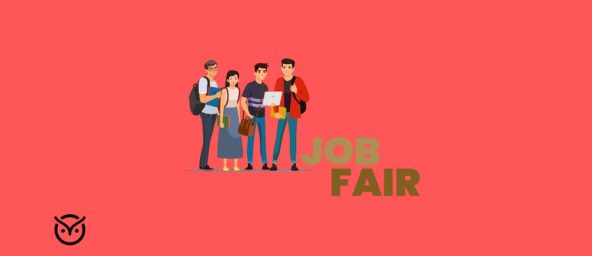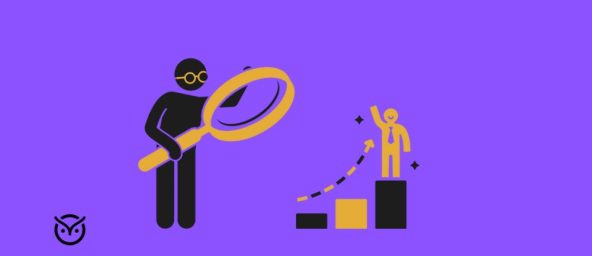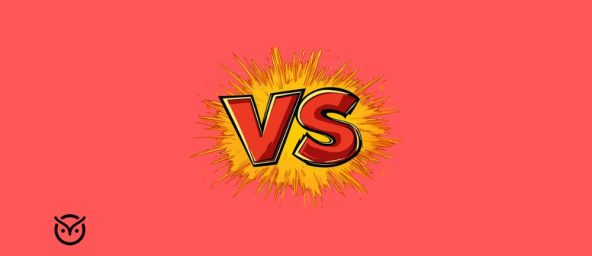
TL;DR
- Optimize recruitment funnel early to keep good candidates from slipping away.
- All company sizes use them to improve employee onboarding and hiring efficiency.
- Spot drop-offs, fix leaks and track key recruiting funnel metrics.
- Focus on each stage: awareness, application, screening, interview and offer.
- Boost talent sourcing and sourcing diverse candidates to keep it strong.
Hiring top talent can feel like trying to fill a bucket that keeps leaking. You may bring in dozens of candidates, but only a few make it through to become hires. That’s why it’s important to optimize recruitment funnel early on. Every stage should move smoothly and keep the right people engaged until the final offer.
In this blog, you will learn why funnel optimization matters, the common stumbling blocks in your funnel recruitment journey, what usually slows it down and how to fix each part of the process so you can hire more effectively.
Why Recruitment Funnel Optimization Matters

Think of the recruitment funnel as the path from first awareness of your employer brand through to a signed offer. When that path has blockages, great candidates vanish, costs surge and hiring managers grow frustrated. A recent benchmark for 2025 shows that the average time-to-fill is 36-42 days and candidate drop-off rates can be 30-50% in many organizations.
By optimizing the funnel, you remove friction, keep candidates engaged, reduce wasted spend and improve your chances of securing the right hire. Smart tracking of the recruiting funnel metrics help you spot where things lag and you can take action based on data. By tracking, you attract quality hires and faster time to productivity.
Funnel Fit Challenge
Answer three quick questions to test your funnel know-how.
1) Which stage of the recruitment funnel usually has the highest drop-off rate?
2) What’s the biggest benefit of optimizing your recruitment marketing funnel?
3) How many days is the average time-to-fill globally?
Common Bottlenecks in Recruitment Funnels

You will often see the same trouble spots showing up repeatedly in a hiring funnel. The list below explains what they are and the typical reasons they keep happening.
- Top-of-funnel sourcing weak: If your recruitment marketing funnel fails to attract enough candidates or the right ones, the rest of the process is compromised. For instance, research shows proactive talent sourcing outperforms passive posting: employee referrals convert at 1 in 10 hires versus needing 50-60 applicants from job boards.
- Application drop-off: A long or confusing application process kills momentum. According to Jobvite benchmarks, only about 8.4% of applicants move on to an interview.
- Screening delays or inconsistency: When screening is slow or the criteria are unclear, top candidates drift away or drop out.
- Interview stage leakage: Poor coordination, uncalibrated interviewers or delays at this stage reduce conversion from interview to offer.
- Offer/acceptance friction: Even if a good candidate reaches the offer stage, long negotiation times, unclear terms or a weak candidate experience can lose them.
- Lack of diversity and inclusive flow: Without conscious efforts to source diverse candidates, your funnel may exclude talent or signal a non-inclusive culture, both of which can impact conversion.
- Insufficient data insights: If you do not use analytics to identify where the funnel is weak, you may simply repeat the same mistakes. A study in IT services showed that using analytics helped expose inefficient sources and weak stages in the recruitment funnel.
Spot the Block: Fix Funnel Bottlenecks
Drag each problem card to the correct funnel stage. Match all four to win.
Bottlenecks
- Application Overload Too many steps or fields
- Screening Delay Slow or unclear criteria
- Interview Lag Scheduling bottlenecks
- Offer Drop-off Late or weak offers
Funnel Stages
How to Optimize Each Stage of the Recruitment Funnel

Every part of your recruiting funnel plays a role in converting candidates into hires. Optimizing each stage in the funnel means tightening leaks, improving communication and using real data instead of guesswork.
Awareness – Build Visibility and Employer Trust
The top of your recruitment marketing funnel sets the tone. Focus on content that highlights your company culture, employee stories and social proof. Collaborate with your marketing team to run targeted campaigns on platforms where your audience actually hangs out.
For hard-to-fill or tech roles, use niche communities like GitHub, Stack Overflow and Reddit to attract attention early. Strong branding keeps the right talent entering your pipeline.
Attraction – Simplify and Personalize the Application Process
The easiest way to cut candidate drop-off is to remove friction. Keep application forms short, mobile-friendly and under five minutes. Use autofill tools or resume-parsing features to save time. A positive experience here ensures more applicants make it to screening.
Screening – Blend Automation with Human Judgment
AI tools can automate repetitive tasks such as CV parsing or basic assessments but balance them with human insight. Automated filters help shortlist faster, yet interviews should still be guided by empathy. Recruiters should also be trained to spot weak screening criteria that filter out strong fits too early.
Platforms like Vettio and Greenhouse allow customizable workflows so recruiters can tailor the funnel recruitment process for specific job roles without losing standardization.
Interview – Structure and Speed Matter
A slow interview process can ruin your hiring momentum. To keep things on track, your all hiring managers agree on a simple evaluation guide. Use clear scorecards so every candidate is judged fairly and without bias. Keep applicants updated between rounds because silence often pushes good candidates to drop out faster than rejection.
Offer – Seal the Deal Quickly
At this final stage of the hiring funnel, timing is everything. Send offers within 24 to 48 hours of the final interview and make them competitive. Adding personalized notes or small touches like early onboarding materials, increases acceptance rates and builds goodwill.
Continuous Feedback Loop
Hiring should not end once someone accepts the offer. Collect feedback from both candidates and hiring teams after each round. This insight helps optimize recruitment funnel and highlights which sources or steps attract the strongest talent. Use feedback as a working guide for future hiring and not something to forget.
Metrics to Track Funnel Success

To truly optimize recruitment funnel performance and monitor key data points, these metrics show what is working and where you are losing talent.
Metrics to Track Funnel Success
Track these signals to see what’s working and where candidates drop off.
| Stage | Metric to Track | Why It Matters |
|---|---|---|
| Awareness | Source of hire, cost per applicant | Reveals which channels attract quality candidates efficiently |
| Attraction | Application completion rate, click-through rate (CTR) | Measures how engaging and user-friendly your job ads are |
| Screening | Time to shortlist, candidate-to-interview ratio | Shows screening efficiency and alignment with job criteria |
| Interview | Interview-to-offer ratio, candidate feedback scores | Identifies interviewer consistency and experience quality |
| Offer | Offer acceptance rate, time to offer | Indicates how competitive and responsive your team is |
| Overall | Time-to-hire, quality-of-hire, cost-per-hire | Provides the full picture of funnel effectiveness and ROI |
Conclusion
When you optimize recruitment funnel performance, hiring stops being reactive and becomes strategic. You no longer chase candidates because you attract them.
The best recruiters today think like marketers and act like analysts. They refine their recruiting funnel through constant feedback, smarter automation and stronger communication. Whether you’re a startup racing for top engineers or a large enterprise filling hundreds of roles, funnel optimization ensures every hire adds real value.
FAQs
Quick answers to common funnel questions.
How does AI improve recruitment funnels?
AI simplifies the repetitive parts of hiring such as resume parsing, candidate ranking and interview scheduling. It highlights strong matches, reduces unconscious bias and saves recruiters time to focus on candidate relationships. The key is to blend automation with empathy rather than replace it.
What is the recruitment funnel method?
The recruitment funnel is a structured hiring model that visualizes each stage of the candidate journey from awareness to onboarding. It helps recruiters track progress, identify leaks and manage the overall hiring funnel more effectively.
How do I create my own funnel?
To build your own hiring funnel, start by laying out each step clearly. These usually include awareness, attraction, screening, interviews and the final offer. Pick tools that match your team’s size and hiring goals. Use automation for simple tasks but make sure your messages to candidates feel personal. Keep an eye on your funnel data often and tweak the process based on what the numbers show to keep improving your results.




